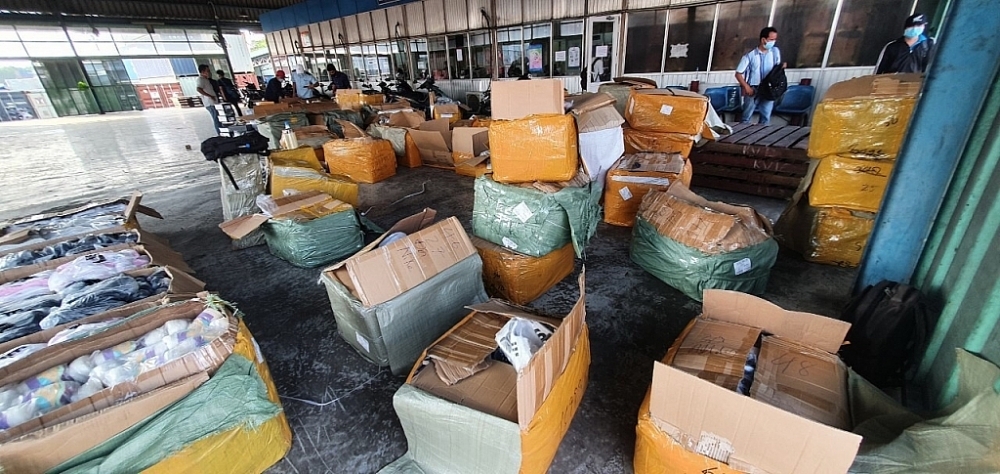VCN – The General Department of Vietnam Customs (GDVC) has directed local customs departments on customs inspection and supervision procedures for transit goods. This follows provisions in the Goods Transit Agreement between the Vietnamese and Cambodian governments in 2013, the Goods Transit Agreement between the Vietnamese and Lao governments in 2009, and the Goods Transit Agreement between the Vietnamese and Chinese governments in 1994.
 |
| Infringing transited goods are detected by Zone 1st Sai Gon Seaport Customs Branch. Photo: T.H |
The GDVC has requested local customs departments to implement customs inspection and supervision procedures for transit goods in line with these agreements, Article 43 of Decree No. 08/2015/ND-CP dated January 21, 2015 of the Government, and guidance in Circular No. 38/2015/TT-BTC dated March 25, 2015.
Goods in transit must be monitored by positioning seals during transportation, and must be subject to customs supervision from the entry border gate to the exit border gate. They must also move along the prescribed route and within the time limit. The Customs branches at these border gates must coordinate and strictly control cargo during transportation and storage in the Vietnamese territory.
The GDVC has requested local customs departments to strengthen customs inspection and control through operational measures, and to only conduct physical inspection of transited goods based on risk assessment and identification for specific violations. When performing customs procedures for transit and exit goods at the exit border gate, the Customs branches must check information and conduct physical inspection if the means of transport or goods show violations such as failing to maintain the status quo of the customs seal, failing to follow the prescribed route and time, or turning off the positioning signal.
If the Customs branches discover transit goods showing signs of violation, they must handle these goods. If the Customs branches detect that the goods are forged with a Vietnamese origin, the customs will handle and seize the goods as per Article 17 of Decree 128/ND-CP dated October 19, 2020 of the Government. If the consignee has an address in Vietnam, investigation and verification is required to prevent violations.
By Ngoc Linh/Ngoc Loan
